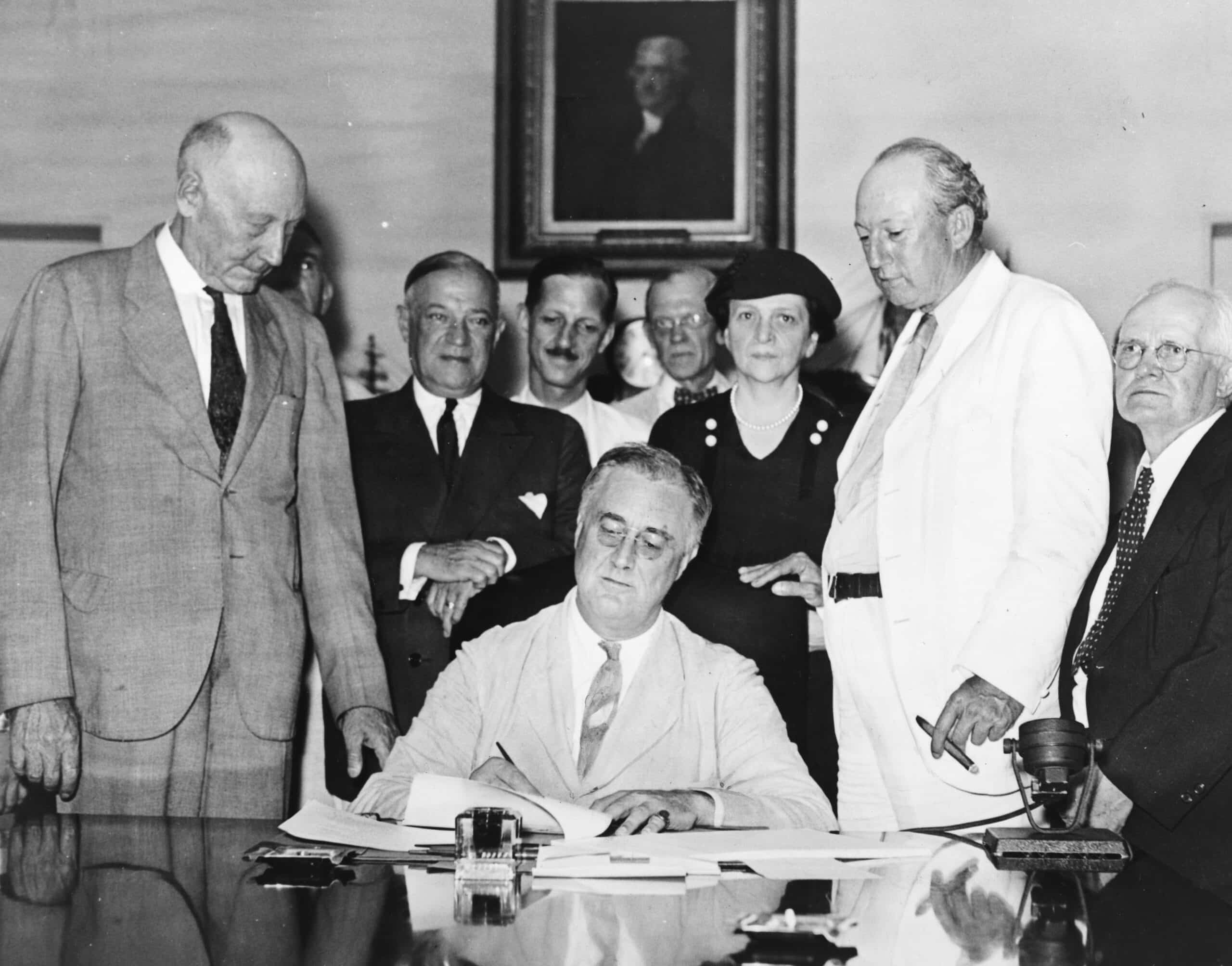On August 14, 1935, President Franklin D. Roosevelt signed the Social Security Act into law, creating one of the most enduring pillars of economic security in American history. For nine decades, Social Security has ensured that millions of Americans—retirees, people with disabilities, and survivors—can count on a guaranteed income, regardless of economic or political shifts.
Today, nearly 74 million people receive benefits every month, making Social Security not just a program, but a lifeline. It has stood the test of time through wars, recessions, and changing administrations because it works. However, as we mark its 90th anniversary, the program is facing new challenges that could weaken it for future generations—unless we take action.
The Three-Legged Stool of Retirement Security
Financial experts often describe sound retirement security as a “three-legged stool,” where each leg represents a different source of income:
- 1. Social Security–the public safety net that guarantees a base level of income for retirees, people with disabilities, and survivors.
- 2. Employer-sponsored pensions or retirement plans–including both traditional defined benefit pensions and defined contribution plans like 401(k)s.
- 3. Personal savings and investments–IRAs, brokerage accounts, home equity, and other private resources.
For public employees, this model is especially important. Government workers dedicate their careers to serving their communities, often for lower pay than their private sector counterparts. Ensuring their financial well-being in retirement is not only a matter of fairness—it’s essential to attracting and retaining skilled people in public service.
While each leg of the stool plays a unique role, the loss or weakening of one can throw the entire structure off balance, threatening retirement security. For millions of working Americans—especially public servants—Social Security is the most reliable and most substantial portion of their retirement security plans. Like defined benefit pensions, it’s shielded from the ups and downs of the stock market and insulated from the collapse of an employer. That stability is exactly why preserving it isn’t just important—it’s essential.
Strengthening Social Security Under the Biden Administration
Over the past few years, the previous presidential administration took meaningful steps to protect and improve Social Security:
- Repealing the Windfall Elimination Provision (WEP) and Government Pension Offset (GPO): In January 2025, the Social Security Fairness Act became law, finally eliminating two provisions that unfairly reduced benefits for millions of teachers, firefighters, police officers, and other public employees. For many, this means hundreds more dollars in their monthly checks and greater financial security in retirement.
- Protecting Benefits from Inflation: In 2024, Social Security benefits rose by 3.2% to keep pace with the rising cost of living. This was in addition to an 8.7% cost-of-living increase in 2023 and a 5.9% increase in 2022.
These measures have not only reinforced Social Security for current beneficiaries but have also strengthened it for the next generation.
Threats Under the Current Administration
Since January 2025, Social Security has faced aggressive changes under the Trump administration and the newly created Department of Government Efficiency (DOGE):
- Staff Cuts and Office Closures: DOGE has moved to eliminate nearly 7,000 SSA positions—about 12% of the agency’s workforce—while closing field offices across the country. This has resulted in longer wait times, service delays, and reduced access, particularly in rural communities.
- Privatization: Public comments from DOGE leadership and proposals for “Trump Accounts” have raised concerns about diverting funds from Social Security to private investment accounts, potentially undermining the program’s guaranteed benefits. Treasury Secretary Scott Bessent openly bragged that the savings program was a “back door” to privatization. The White House also recently nominated Heritage Foundation economist E.J. Antoni to lead the Bureau of Labor Statistics. Antoni has called Social Security a “Ponzi scheme” and has argued for “sunsetting” the program altogether.
- Trust Fund Risks: New tax policies could accelerate depletion of the Old-Age and Survivors Insurance Trust Fund to as early as 2032, potentially triggering a 19% cut in benefits. Changes in immigration policies, too, could impact Social Security solvency, as fewer workers contribute to the system, many of whom never utilize the benefits.
These changes aren’t minor adjustments—they could fundamentally weaken Social Security, jeopardizing the stability of the retirement stool for current and future generations.
Why This Anniversary Matters
Social Security has been a cornerstone of economic security for 90 years. It has endured through wars, recessions, and political change because it works. But its survival is not guaranteed. The threats we see today—service cuts, privatization efforts, and funding risks—could erode the promise that Social Security represents.
For millions of Americans, especially those with modest personal savings or without a pension, Social Security is the difference between living with dignity and living in poverty. We cannot allow one of the strongest legs of our retirement stool to be removed.
Social Security is the cornerstone of retirement security in America. Cuts to Social Security could have a particularly devastating impact on public pensions that set their benefit levels in tandem with the program.
What You Can Do
- 1. Stay informed about policy changes to Social Security: Sign up for our daily news clips to stay in the know about the latest developments on Social Security and public pensions.
- 2. Push back against proposals that would privatize or cut benefits.
- 3. Support pension protections at the state and national levels to keep the other legs of the stool strong.
For 90 years, Social Security has been more than a government program—it’s been a promise. Let’s honor its anniversary not just with celebration, but with a commitment to ensuring that promise lasts for another 90 years and beyond.
